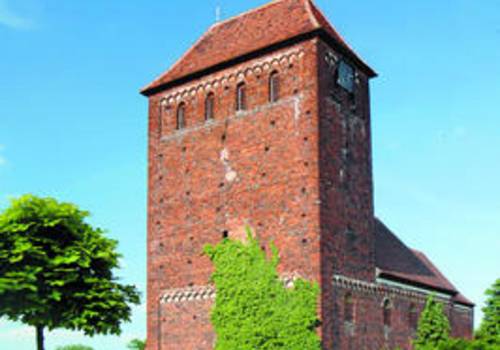Melkow village church
Both the interior and exterior of Melkow village church are in their original condition
A document suggests that this late Romanesque brick church was built in about 1200 as a Slav mission church. Another hypothesis places its year of construction between 1150 and 1160. Everyone agrees, however, that it was named the Chapel of the Cross of Christ. With its excellent workmanship and homogeneity, it is modelled on the monastery church in Jerichow. Its almost complete state of preservation makes this village church an outstanding example of Romanesque architecture. It is similar in type to many other buildings from around 1200. Apart from the enlarged apse windows, the entire structure of the walls, with pilaster strips, friezes, door and window apertures, has been preserved. The white painted interior is also typical of the Romanesque period. Corner and round arch friezes have been added for decoration, and the small high windows in the choir and nave are also of original design. The octagonal chalice-shaped font with its small corner figures from the first half of the 13th century is mediaeval in character. The otherwise unadorned interior contains a carved 15th century crucifix in which Christ wears a circlet, typical of the late Romanesque period, rather than a crown of thorns. The exterior brickwork also has some interesting features; there are little cup and groove markings everywhere, even on the west tower and north side, which are probably of religious origin.

![25 Jahre Siegel - Offi Seite [(c)Administrator]](https://www.strassederromanik.de/de/datei/anzeigen/id/79750,1050/25_jahre_siegel.png)
